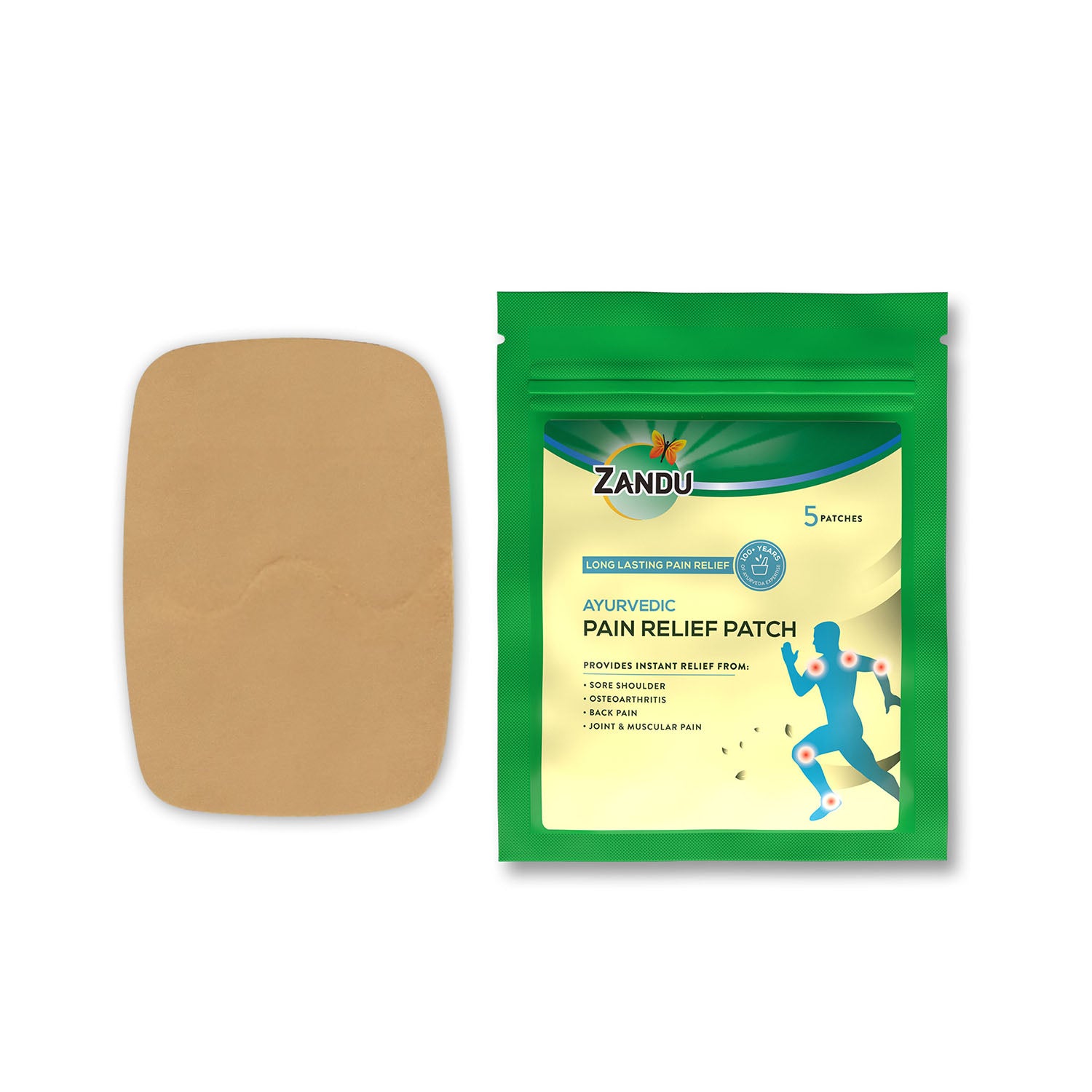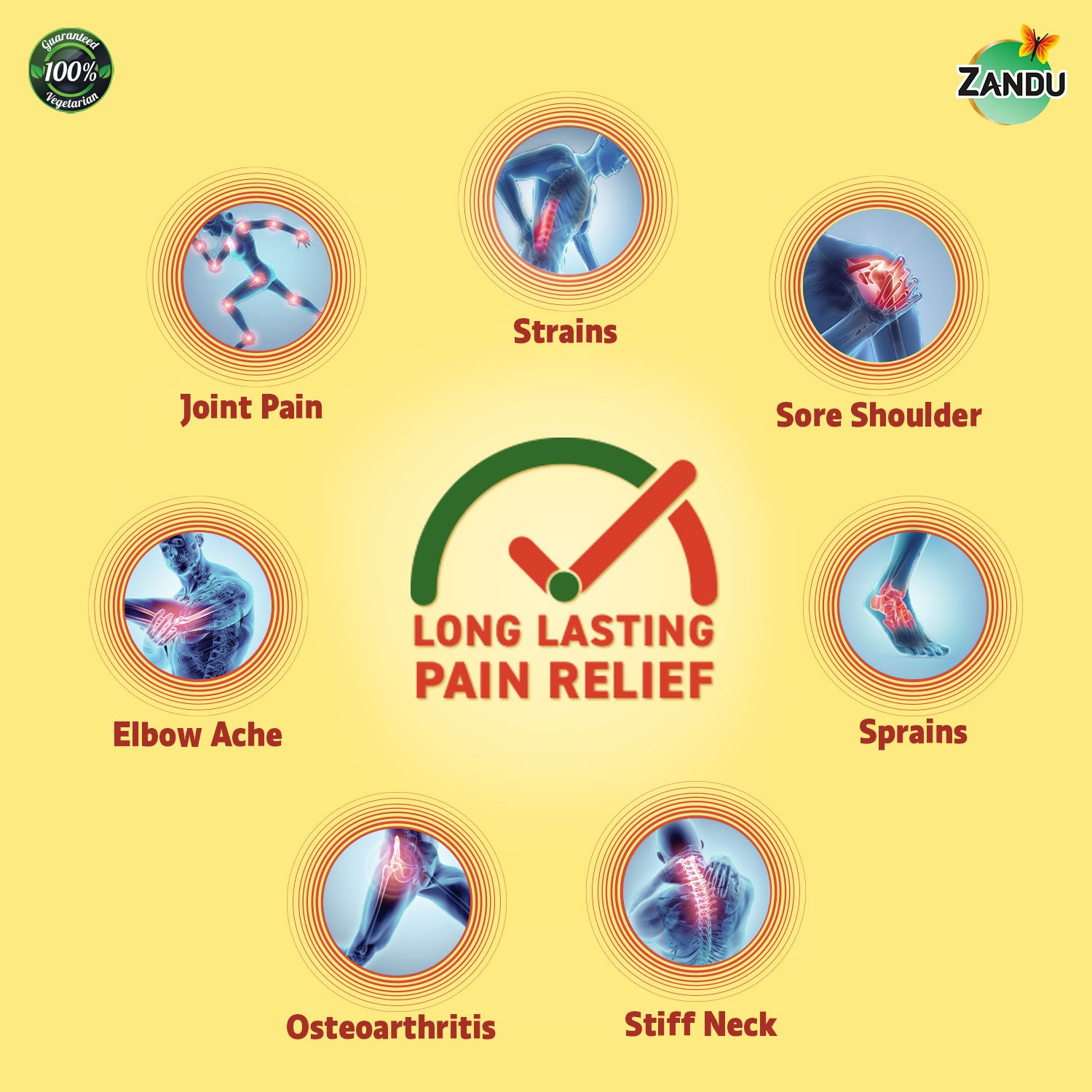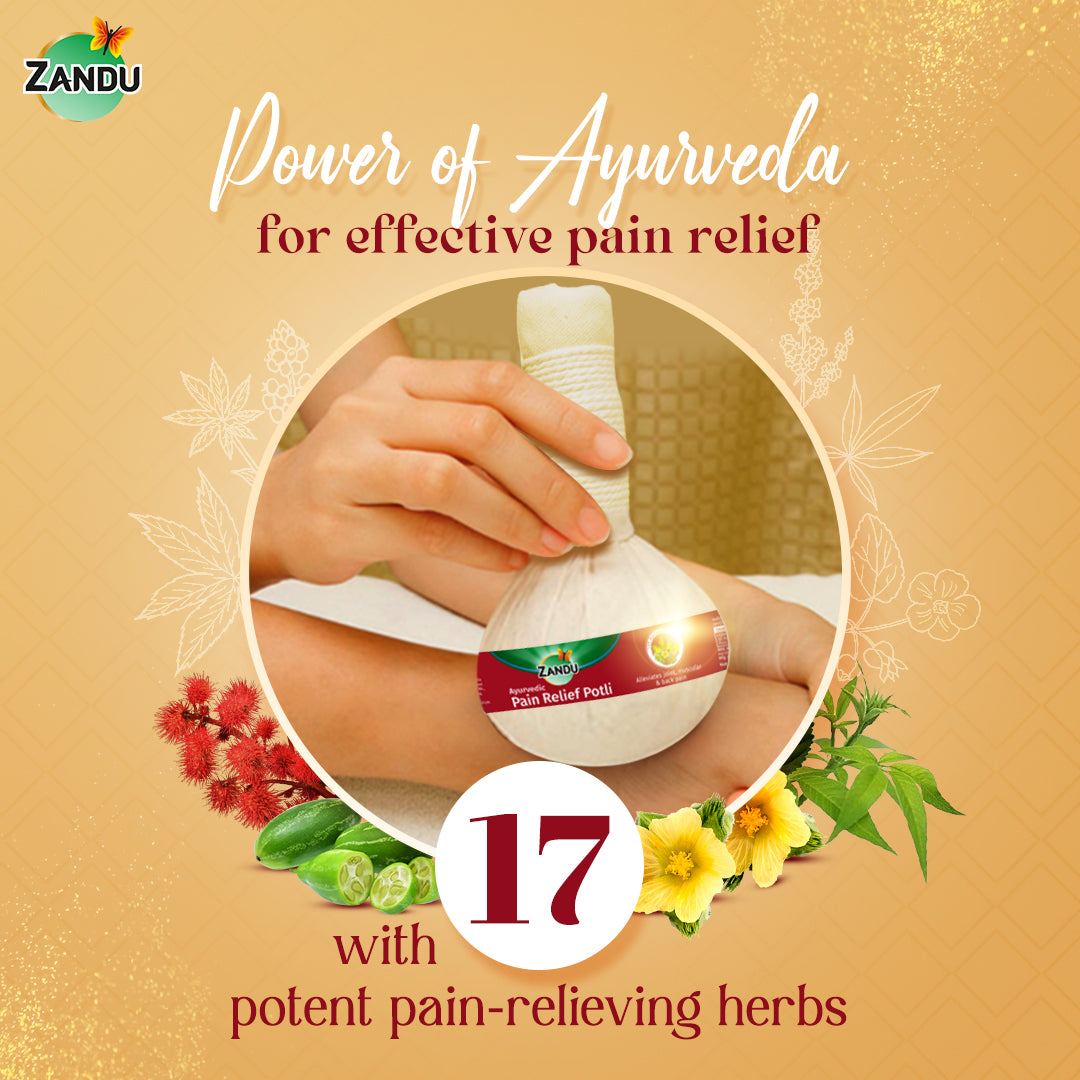Zandu Pain Release Patch
Sale price
₹163
Regular price₹233 30% off
Zandu Pain Relief Potli
Sale price
₹360
Regular price₹515 30% off
Zandu offers a range of Ayurvedic medicines in various formats like tablets, balms, ointments, and juices. These products are formulated with natural ingredients known for their anti-inflammatory and pain-relieving properties.
Zandu's balms are infused with Ayurvedic ingredients that penetrate deep into the skin to provide quick relief from joint and muscle pain. These balms also help in reducing inflammation and promoting blood circulation.
Absolutely, Zandu's Ayurvedic joint and bone care products can be used preventively to support overall joint health. Regular use may help in reducing the risk of developing joint problems in the future.
Ayurvedic joint products help maintain flexibility, reduce inflammation, and promote overall joint health. They offer a natural and holistic approach to well-being.
The best Ayurvedic medicine for bones and joints includes Sallaki Capsules, Bone Care Juice with Hadjod, and Ortho Vedic Oil by Zandu. These remedies help relieve pain, reduce inflammation, and strengthen bones naturally.
Sallaki Capsules are considered one of the best Ayurvedic tablets for joint pain. They help reduce inflammation and support joint flexibility, especially in cases of arthritis and osteoarthritis.
Yes, Ayurvedic medicines like Bone Care Juice and Ortho Vedic Oil are specially formulated to ease bone pain, improve bone density, and enhance healing after injuries or fractures.
Yes, Ayurvedic medicines are made with natural ingredients and are generally safe for long-term use. They work holistically to treat the root cause without causing harmful side effects.
Results vary based on the severity of the condition, but many users report improvement within 7–15 days of consistent use. Products like Ortho Vedic Oil show visible results in as little as 7 days.




